LIFT intersects 33 m at 1.09% Li2O at its Echo pegmatite, Yellowknife Lithium Project, NWT
Rhea-AI Summary
Li-FT Power reported assay results from 13 drill holes at the Yellowknife Lithium Project, intersecting significant spodumene mineralization. Notable results include 33 m at 1.09% Li2O at the Echo pegmatite. The drilling program covered various pegmatite complexes including Echo, BIG East, Ki, Fi Main, and Shorty, with the Echo showing the most promising results. Highlights include YLP-0281 hitting 15 m at 1.19% Li2O and YLP-0285 hitting 17 m at 1.05% Li2O. Drilling revealed new spodumene-bearing dykes, indicating potential for further discoveries.
Positive
- Drill hole YLP-0281 intersected 33 m at 1.09% Li2O.
- Drill hole YLP-0285 intersected 17 m at 1.05% Li2O, including 9 m at 1.28% Li2O.
- Discovery of a new spodumene-bearing dyke at Echo pegmatite.
- Potential for additional hidden dykes in future drill testing.
- Engagement with New Era Publishing for marketing services.
Negative
- 7 of the 13 drill holes returned assays with less than 0.2% Li2O.
- Several pegmatite dykes showed negligible grades, including holes YLP-0279, YLP-0275, and YLP-0273.
- Significant portions of the Fi Main pegmatite returned assays below 0.2% Li2O.
News Market Reaction 1 Alert
On the day this news was published, LIFFF gained 1.40%, reflecting a mild positive market reaction.
Data tracked by StockTitan Argus on the day of publication.
VANCOUVER, British Columbia, May 28, 2024 (GLOBE NEWSWIRE) -- Li-FT Power Ltd. (“LIFT” or the “Company”) (TSXV: LIFT) (OTCQX: LIFFF) (Frankfurt: WS0) is pleased to report assays from 13 drill holes completed at the Shorty, BIG East, Echo, Fi Main, & Ki pegmatites within the Yellowknife Lithium Project (“YLP”) located outside the city of Yellowknife, Northwest Territories (Figure 1). Drilling intersected significant intervals of spodumene mineralization, with the following highlights:
Highlights:
- YLP-0281: 15 m at
1.19% Li2O, (Echo)
and: 9 m at1.02% Li2O
and: 9 m at0.98% Li2O
- YLP-0285: 17 m at
1.05% Li2O, (Echo)
including: 9 m at1.28% Li2O
Discussion of Results
This news release provides results for 13 drill holes (2,669 m) from LIFT’s 2024 winter drilling program. Holes are reported from five different pegmatite complexes that include Echo, BIG East, Ki, Fi Main, and Shorty. A table of composite calculations, general comments related to this discussion, and a table of collar headers are provided towards the end of this section.
Dave Smithson, SVP Geology of LIFT comments, “We are excited about the last hole of the Echo winter program which hit 17 m at
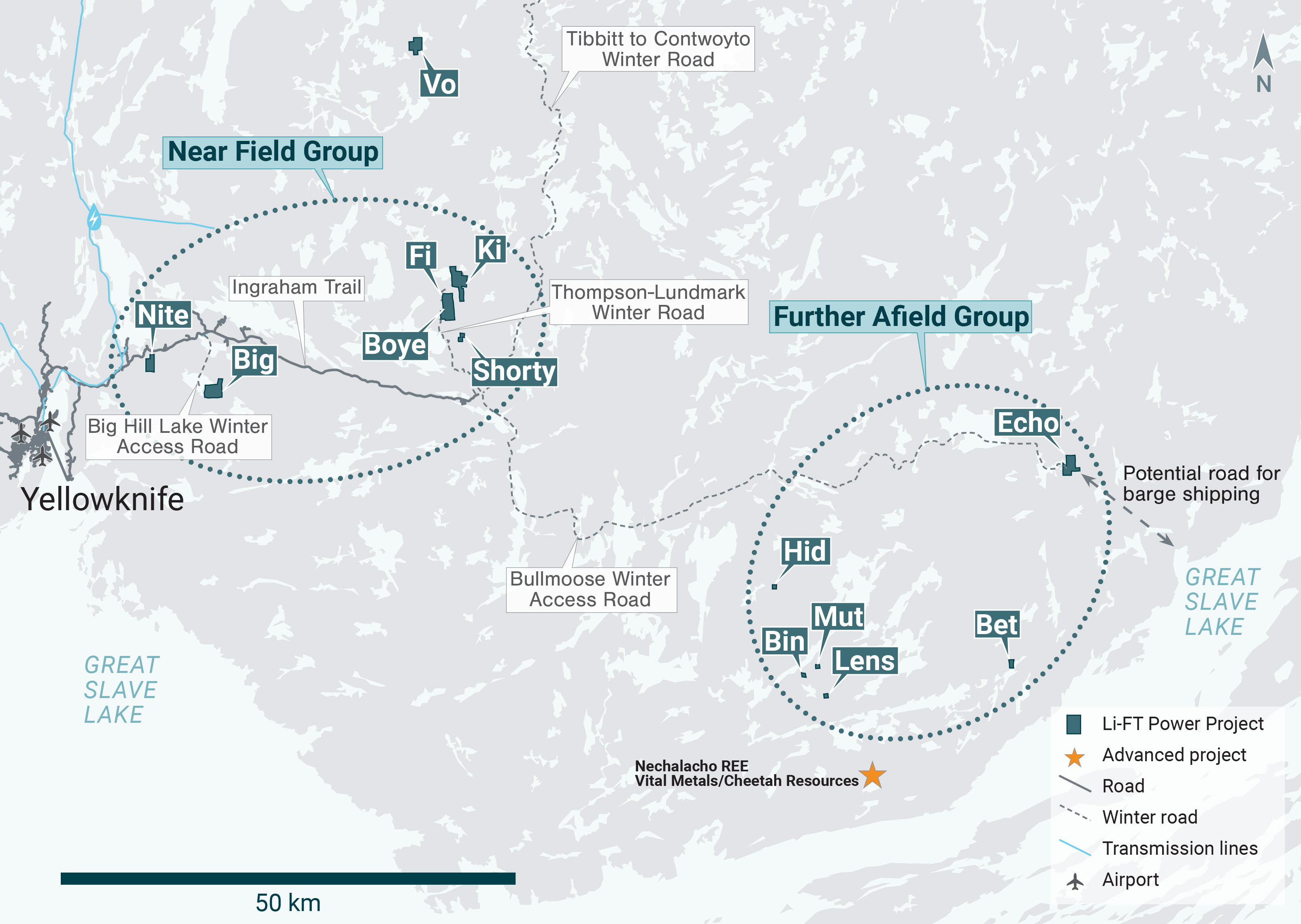
Figure 1 – Location of LIFT’s Yellowknife Lithium Project. Drilling has been thus far mainly focused on the Near Field Group of pegmatites which are located to the east of the city of Yellowknife along a government-maintained paved highway, and advancing to the Echo target, the first drilling in the Further Afield Group.
Echo Pegmatite
The Echo pegmatite complex comprises a steeply dipping, northwest-trending, feeder dyke (“Echo feeder”) that splits into a fanning splay of moderate to gently dipping dykes for 0.5 km to the northwest (“Echo splay”). The dyke complex has a total strike length of over 1.0 km. The feeder dyke is 5-15 m wide whereas the gently dipping dykes in the splay are locally up to 25 m thick. Five of the six holes reported here were drilled on the splay and one was drilled on the feeder. Holes are described from approximately northwest to southeast.
YLP-0281 was drilled on a section located 400 m from where the splay merges with the feeder, testing the Echo splay from 75 to 200 m below the surface and stepped back 100 m from previously released YLP-0212 (
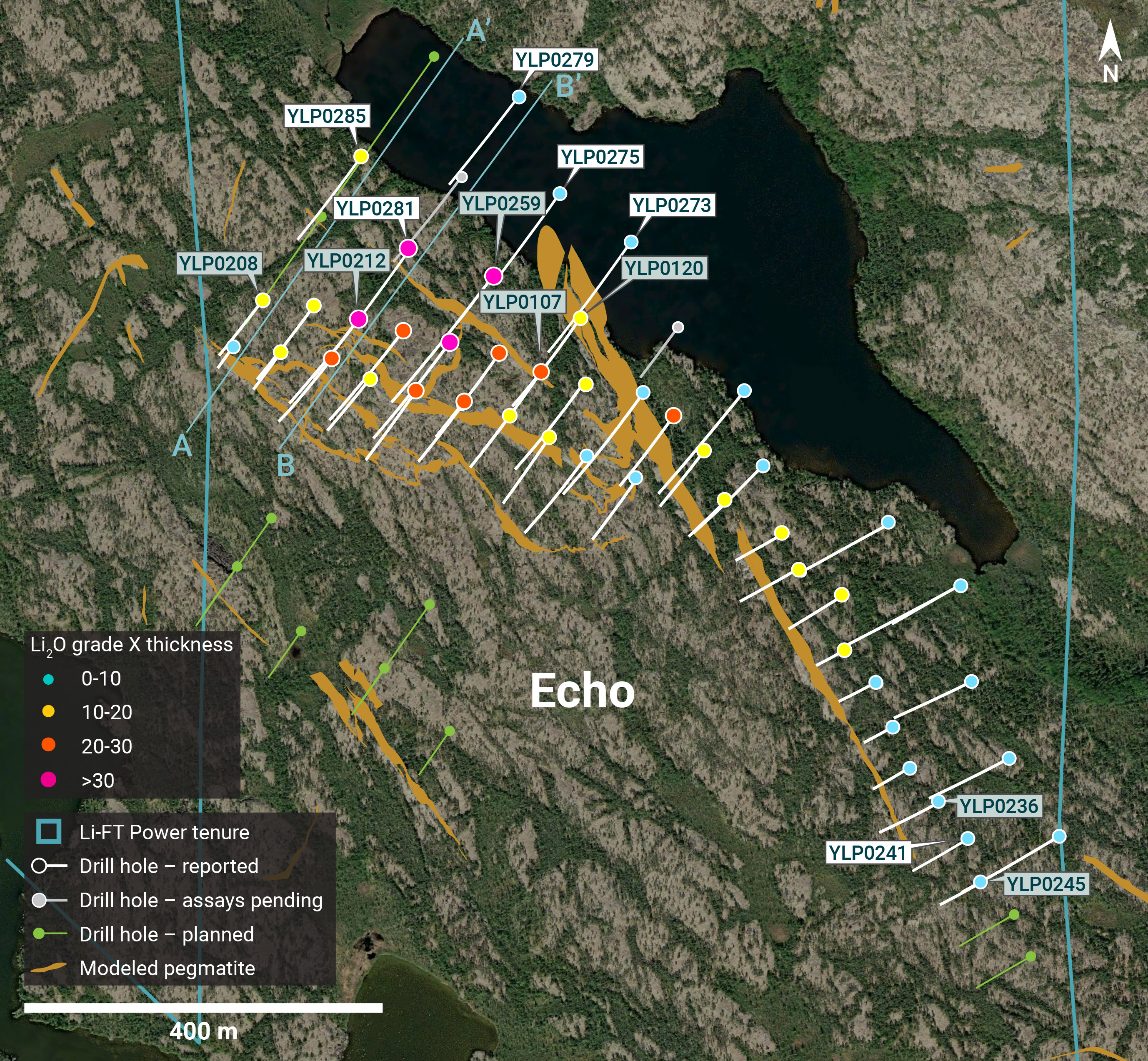
Figure 2 – Plan view showing the surface expression of the Echo pegmatite with diamond drill holes reported in this press release.
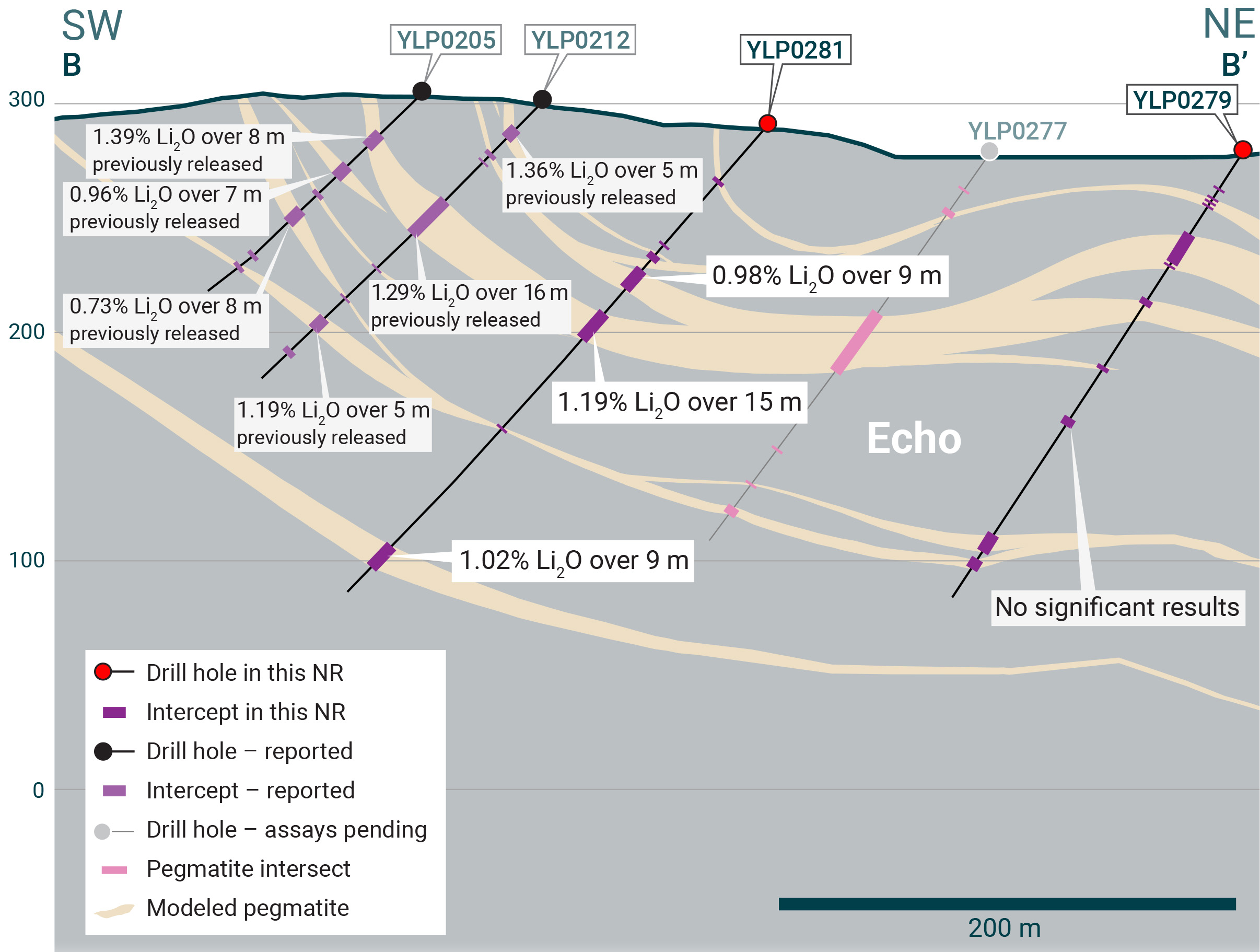
Figure 3 – Cross-section illustrating YLP-0281 with results as shown in the Echo pegmatite dyke with a 33 m interval of
YLP-0285 was drilled on the Echo splay on a section located 500 m from where the splay merges with the feeder, to test from 50 to 150 m below the surface and stepped back 200 m from previously released YLP-0208 (
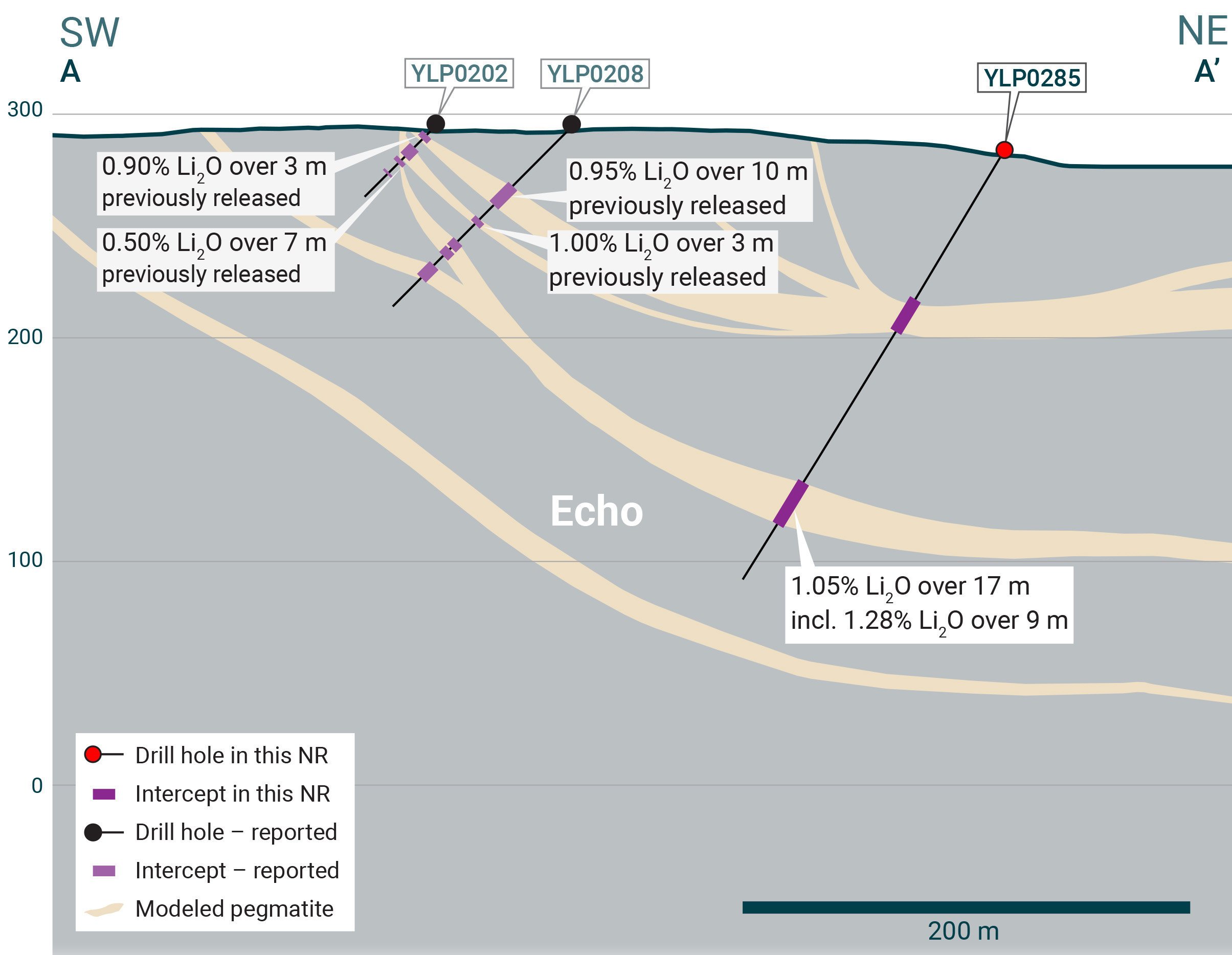
Figure 4 – Cross-section illustrating YLP-0285 with results as shown in the Echo pegmatite dyke with a 17 m interval of
YLP-0279 was drilled on the same section as YLP-0281 but stepped back to the northeast by 200 m. Within a 200 m interval starting just below overburden, drilling intersected eight pegmatite dykes with widths of 1-17 m for cumulative pegmatite thickness of 46 m. All assays returned <
YLP-0275 was drilled on a section stepped 100 m east of the section with YLP-0281/0279 and 300 m from where the splay merges with the feeder. The hole was drilled to test at 10 to 125 m below the surface and stepped back 125 m from previously released YLP-0259 (
YLP-0273 was drilled on a section stepped another 100 m east and approximately 200 m from where the splay merges with the feeder. This hole tested the splay at 50-125 m vertical depth and stepped back 100 m from previously released YLP-0120 (
YLP-0241 is the only hole reported here that tested the Echo feeder, in this case on a section 550 m southeast from where the feeder merges with the splay. The hole was drilled to test at 50 m below the surface as well as in between and along strike of previously released YLP-0236 (
BIG East Pegmatite
The BIG East pegmatite complex comprises a north-northeast trending corridor of parallel-trending dykes that is exposed for at least 1.8 km of strike length, ranges from 10-100 m wide, and dips approximately 55°-75° degrees to the west.
YLP-0260 was drilled near the northern mapped extent of the BIG East pegmatite, to test this corridor at 50-75 m below the surface and 50 m up-dip of previously released YLP-0271 (
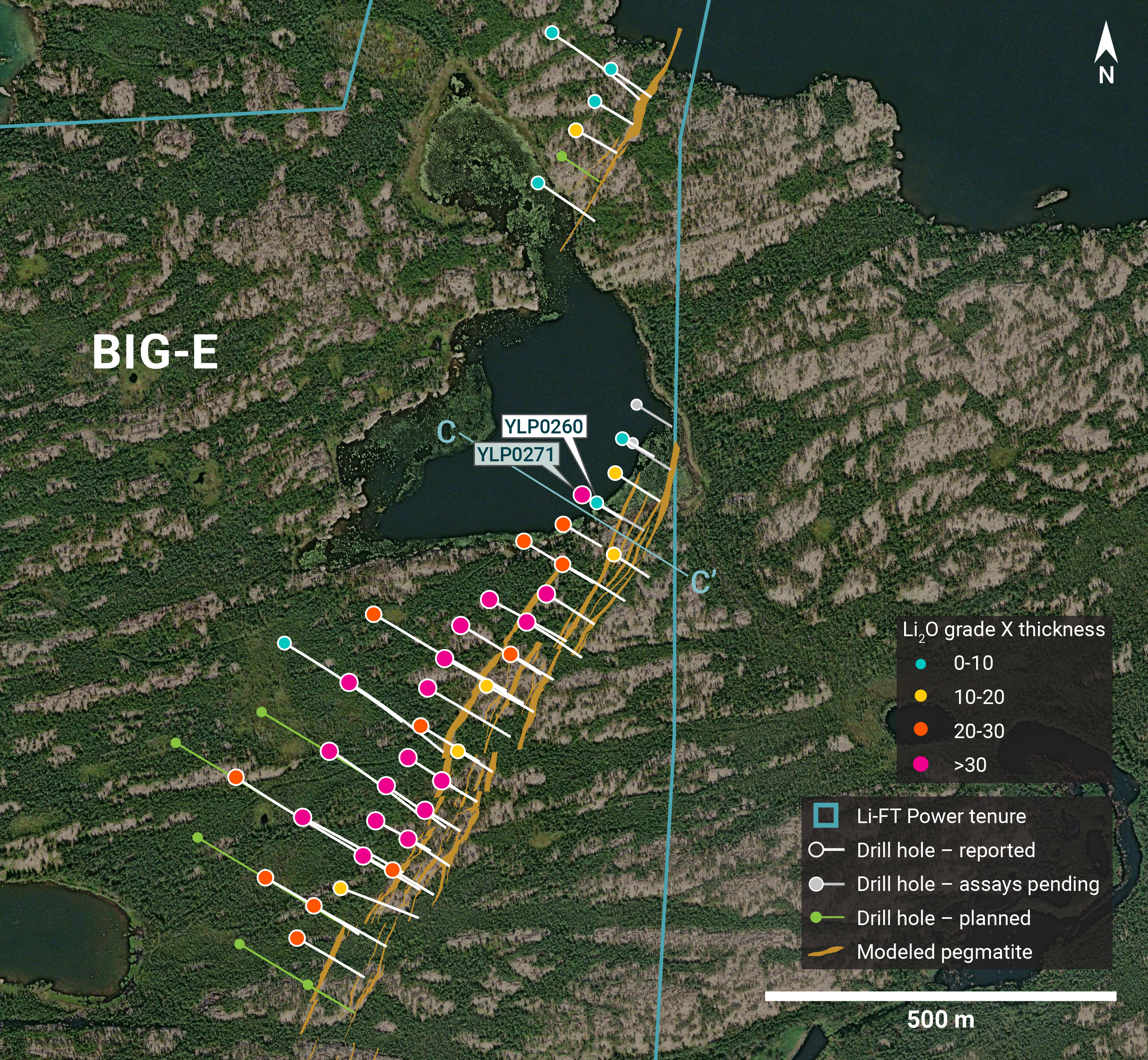
Figure 5 – Plan view showing the surface expression of the BIG East pegmatite with diamond drill holes reported in this press release.
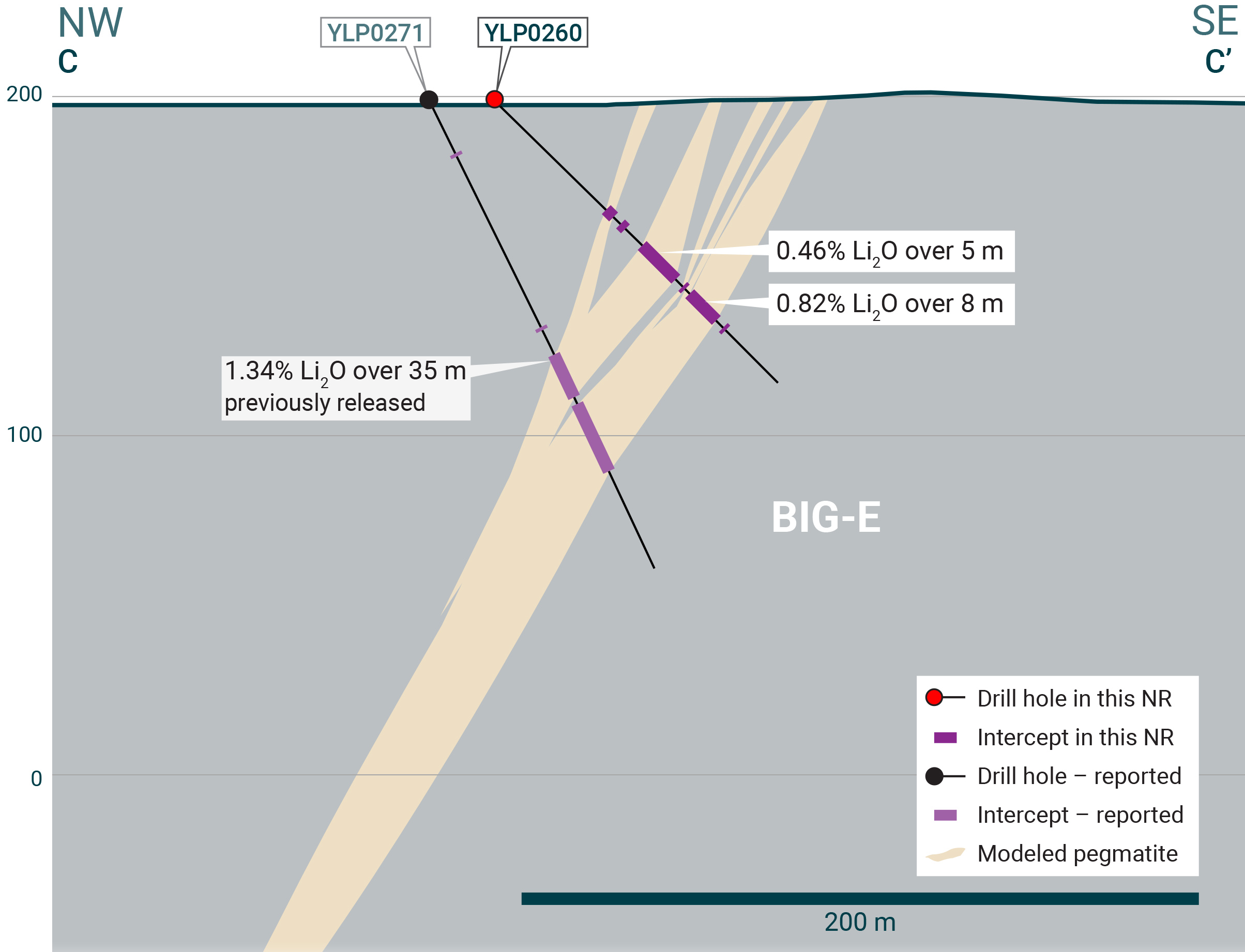
Figure 6 – Cross-section illustrating YLP-0260 with results as shown in the BIG East pegmatite dyke with an 8 m interval of
Ki Pegmatite
The Ki pegmatite complex comprises a north-northwest trending corridor of dykes that extends for at least 1.3 km on surface and dips steeply to the southwest. The southern part of the corridor consists mostly of one large dyke and several narrower flanking dykes that sum to a constant pegmatite width of around 25 m. The northern part consists of two relatively thick dykes that are between 50-150 m apart, with the western dyke comprising the northern extension of the Ki dyke and the more eastern dyke referred to as Perlis.
YLP-0249 was drilled on the southern half of the Ki corridor to test the Ki dyke at 50-75 m below the surface and 50 m downdip of previously released YLP-0072 (
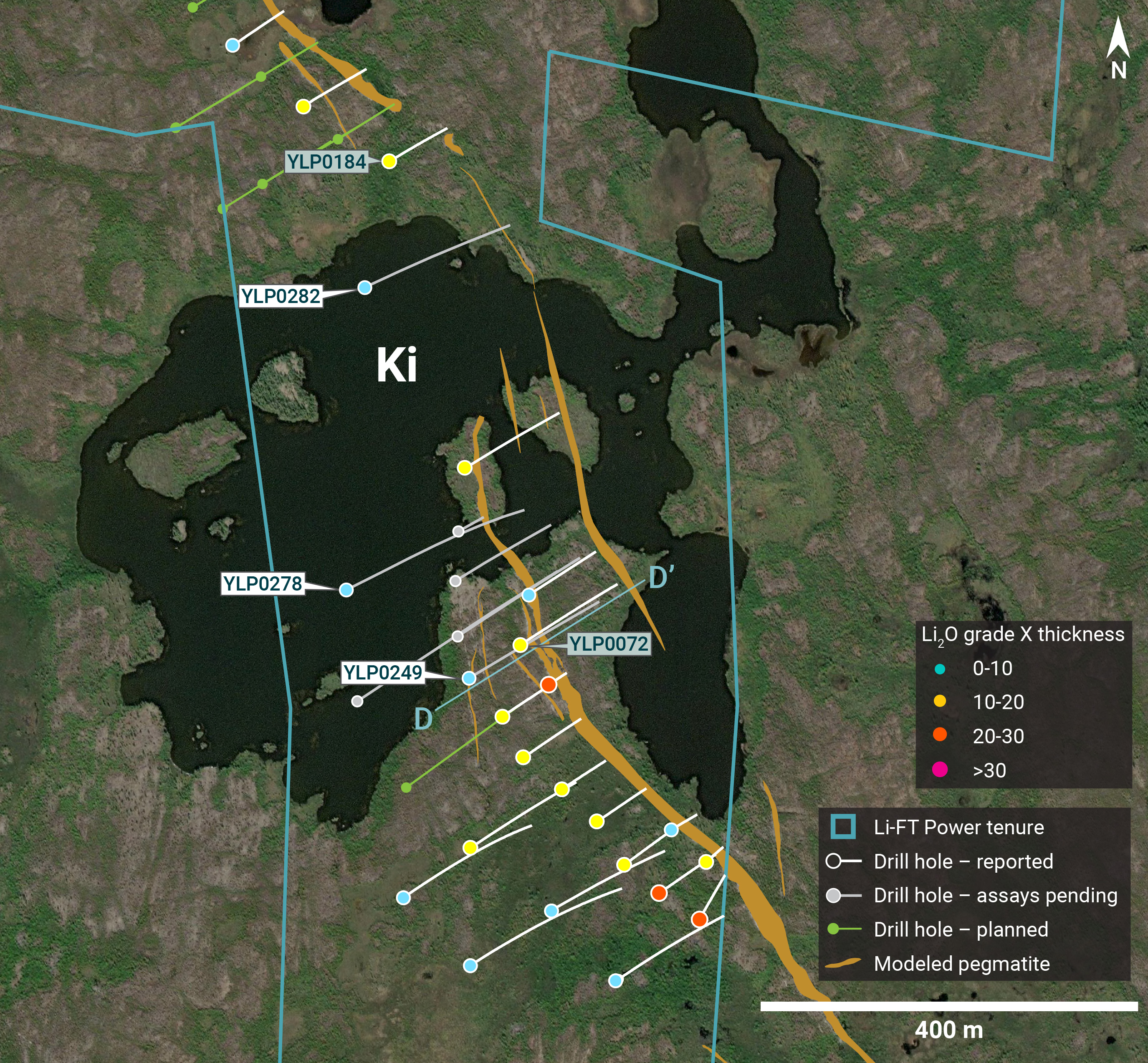
Figure 7 – Plan view showing the surface expression of the Ki pegmatite with diamond drill holes reported in this press release.
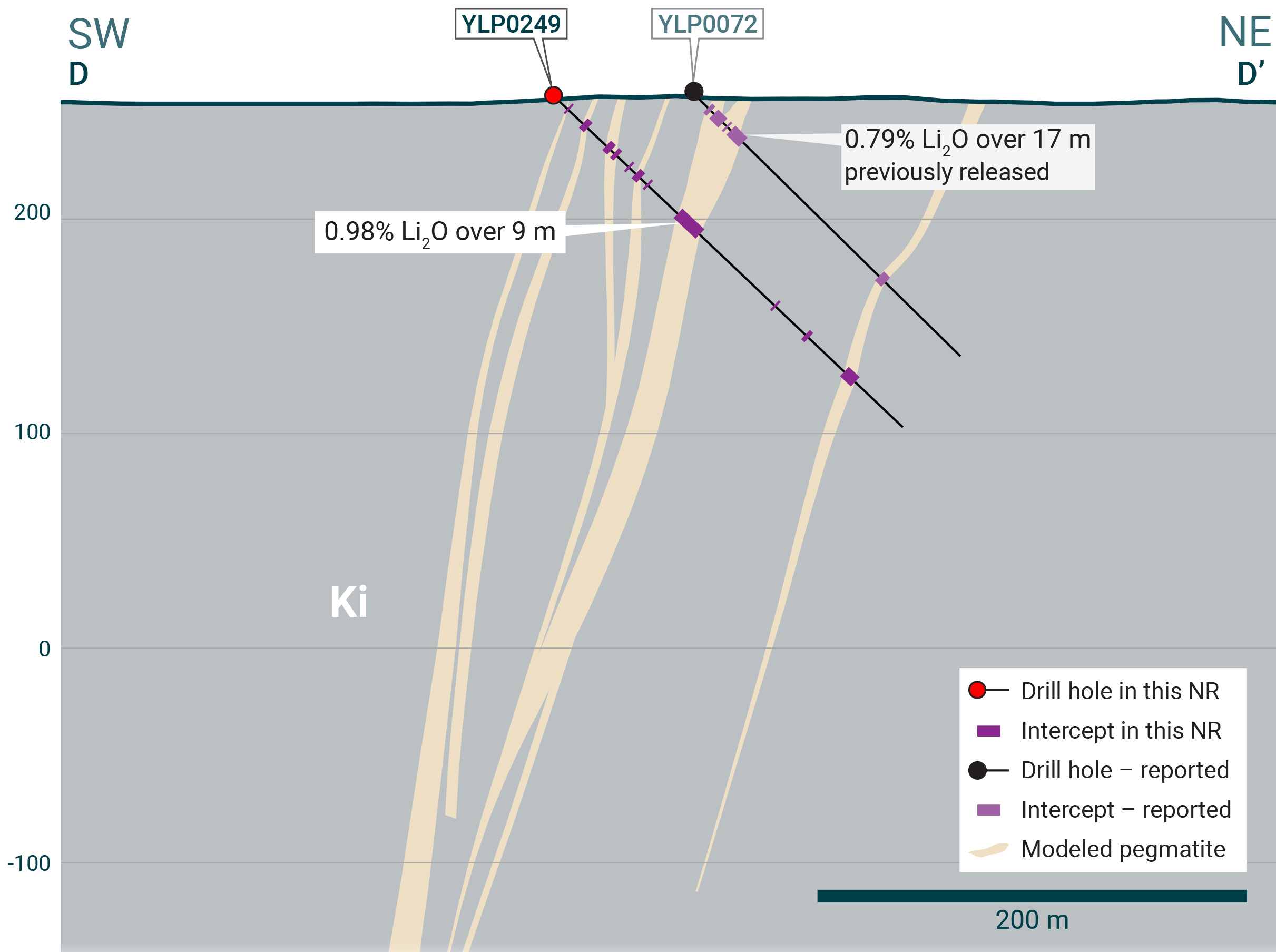
Figure 8 – Cross-section illustrating YLP-0249 with results as shown in the Ki pegmatite dyke with a 9 m interval of
YLP-0278 was drilled on a section 150 m north of the section with YLP-0249/0072 to test the Ki dyke at 125 m below the surface. Drilling cut a 90 m wide corridor with six dykes between 1-11 m in width for a total of 24 m of pegmatite. The thickest of these dykes returned a composite of
YLP-0282 was drilled on the northern half of the Ki corridor where the Ki and Perlis dykes occur more closely together, on a section 300 m north of YLP-0278 and 100 m south of previously released YLP-0184 (
Shorty Pegmatite
The Shorty pegmatite is formed by several sub-parallel dykes that, together, define a pegmatite-bearing corridor that is at least 1.4 km long, up to 100 m wide, north-northeast striking, and dips 50°-70° to the west. The corridor itself consists of both country rock and pegmatite, with pegmatite occurring in either a single 10-40 m wide dyke or as 2-4 dykes with a similar cumulative width spread over 50-100 m of core length.
YLP-0280 was drilled to test one of the thicker dykes in the Shorty corridor at 25 m below the surface and 25 m up-dip of YLP-0283 (
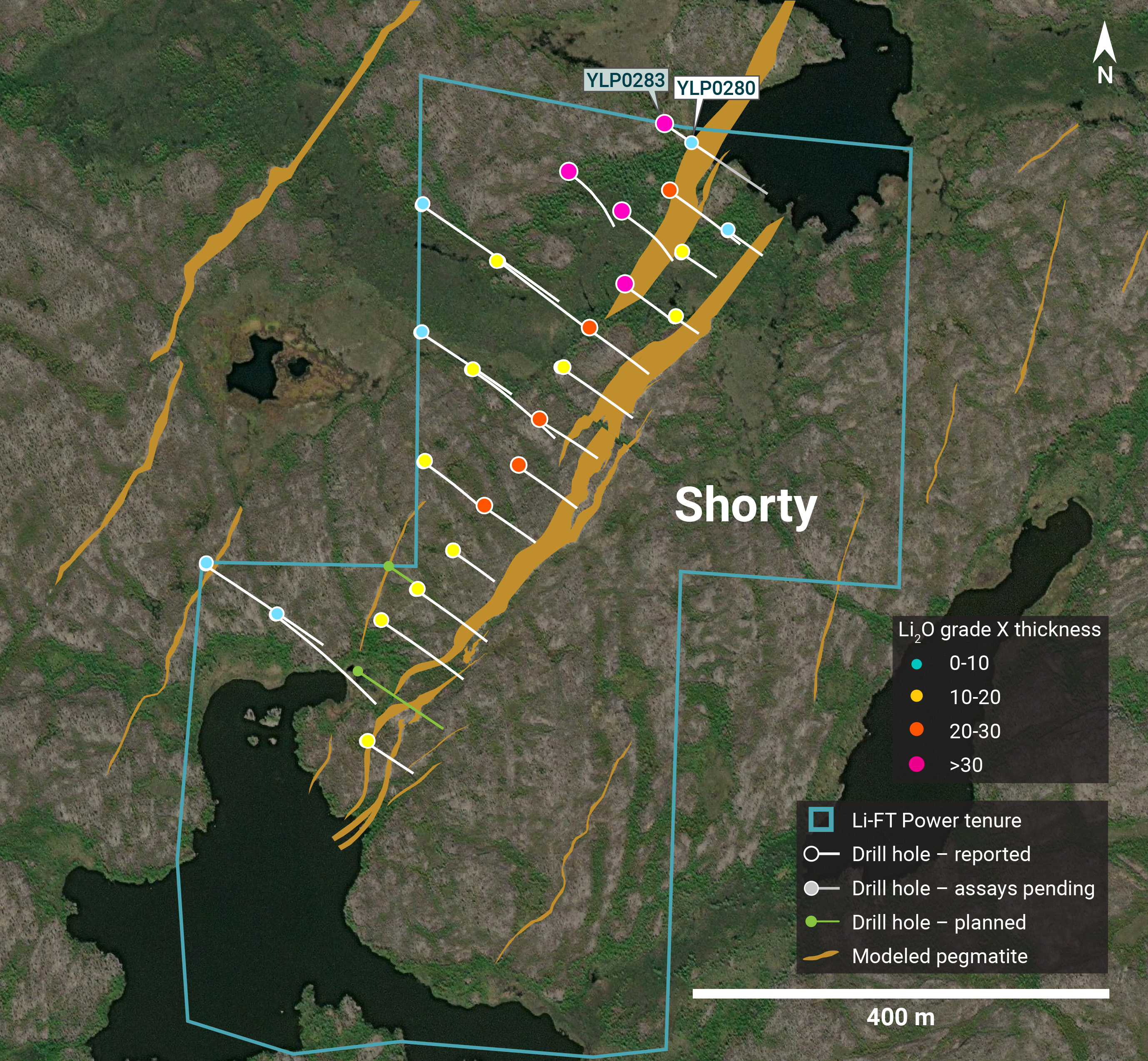
Figure 9 – Plan view showing the surface expression of the Shorty pegmatite with diamond drill holes reported in this press release.
Fi Main Pegmatite
The Fi Main pegmatite complex crops out over at least 1.5 km of strike length within a north-south striking corridor that dips between 70°-85° to the west. The central 800-900 m of the complex can be split into a northern part where most pegmatite occurs in a single 25-30 m thick dyke and a southern part where this dyke splits into upper and lower pegmatites that then remerge 450 m further south. The width of the Fi Main corridor ranges from 25-75 m where it is dominated by a single dyke and between 75-150 m where it is split into two or more dykes. The two holes reported here were both drilled at the north end of the complex.
YLP-0238 was drilled to test the northern part of the Fi Main corridor at approximately 10-125 m below the surface and in between and along strike of previously released YLP-0233 and YLP-0250 (both no significant results). Over a 125 m interval starting near the surface, new drilling intersected nine pegmatite dykes between 1-10 m in width for cumulative pegmatite of 40 m. All assays of pegmatite returned <
YLP-0242 was drilled on the same section as YLP-0238 but stepped back to test down to 200 m below the surface and 100 m downdip of YLP-0238. Drilling intersected 12 pegmatite dykes between 1-20 m wide and spaced 3-39 m apart, for a cumulative pegmatite width of 52 m over 225 m of drill core. As with the up-dip hole, however, all assays of pegmatite were <
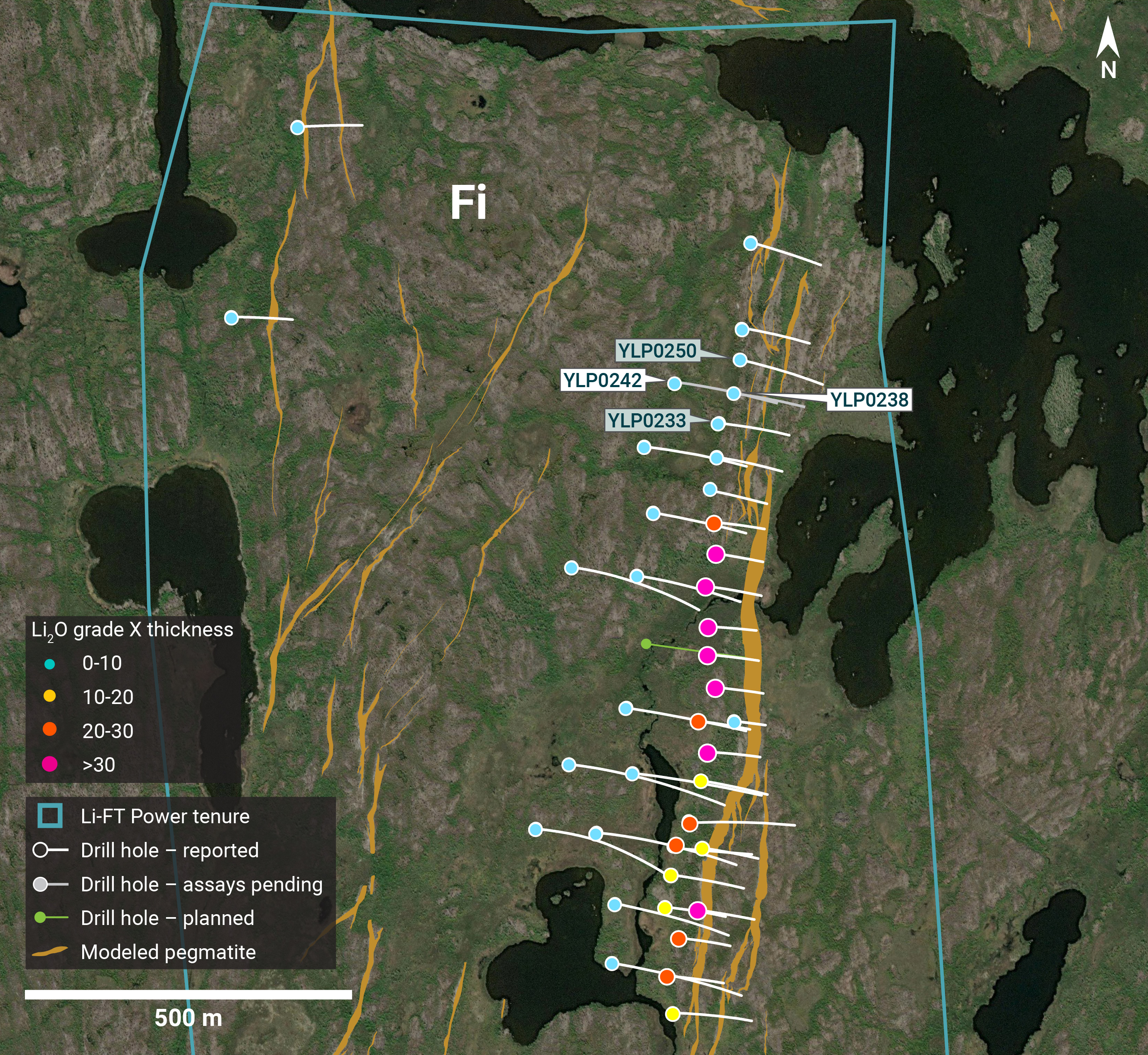
Figure 10 – Plan view showing the surface expression of the Fi Main pegmatite with diamond drill holes reported in this press release.
Table 1 – Assay highlights for drill holes reported in this press release
| Hole No. | From (m) | To (m) | Interval (m) | Li2O% | Dyke |
| YLP-0238 | No significant results | Fi Main | |||
| YLP-0241 | 60 | 64 | 4 | 0.53 | Echo |
| YLP-0242 | No significant results | Fi Main | |||
| YLP-0249 | 77 | 86 | 9 | 0.98 | Ki |
| YLP-0260 | 68 | 73 | 5 | 0.46 | BIG East |
| and | 80 | 88 | 8 | 0.82 | |
| YLP-0273 | No significant results | Echo | |||
| YLP-0275 | No significant results | Echo | |||
| YLP-0278 | 161 | 166 | 5 | 0.51 | Ki |
| YLP-0279 | No significant results | Echo | |||
| YLP-0280 | No significant results | Shorty | |||
| YLP-0281 | 83 | 92 | 9 | 0.98 | Echo |
| and | 107 | 122 | 15 | 1.19 | |
| and | 246 | 255 | 9 | 1.02 | |
| YLP-0282 | 163 | 164 | 1 | 0.57 | Ki |
| and | 174 | 177 | 3 | 0.54 | |
| YLP-0285 | 173 | 190 | 17 | 1.05 | Echo |
| incl | 180 | 189 | 9 | 1.28 | |
Drilling Progress Update
Currently, LIFT has reported results from 270 diamond drill holes (46,764 m). The Company concluded its winter drill program at the Yellowknife Lithium Project with a combined total of 286 diamond drill holes (49,548 m) completed between the summer and winter programs.
General Statements
All 13 holes described in this news release were drilled broadly perpendicular to the dyke orientation so that the true thickness of reported intercepts will range somewhere between 65
Mineralogical characterization for the YLP- pegmatites is in progress through hyperspectral core scanning and X-ray diffraction work. Visual core logging indicates that the predominant host mineral is spodumene.
Table 2 - Drill collars table of reported drill holes in this press release
| Drill Hole | NAD83 | Easting | Northing | Elevation (m) | Depth (m) | Azimuth (°) | Dip (°) | Dyke |
| YLP-0238 | Zone 12N | 371,824 | 6,942,221 | 254 | 153 | 98 | 45 | Fi Main |
| YLP-0241 | Zone 12N | 439,725 | 6,922,143 | 288 | 102 | 240 | 45 | Echo |
| YLP-0242 | Zone 12N | 371,733 | 6,942,239 | 252 | 258 | 100 | 51 | Fi Main |
| YLP-0249 | Zone 12N | 373,014 | 6,942,853 | 255 | 222 | 57 | 45 | Ki |
| YLP-0260 | Zone 12N | 346,254 | 6,933,386 | 197 | 116 | 121 | 45 | BIG East |
| YLP-0273 | Zone 12N | 439,348 | 6,922,810 | 276 | 180 | 215 | 82 | Echo |
| YLP-0275 | Zone 12N | 439,268 | 6,922,864 | 276 | 201 | 215 | 56 | Echo |
| YLP-0278 | Zone 12N | 372,884 | 6,942,946 | 254 | 328 | 60 | 50 | Ki |
| YLP-0279 | Zone 12N | 439,223 | 6,922,973 | 277 | 231 | 215 | 59 | Echo |
| YLP-0280 | Zone 12N | 373,015 | 6,938,335 | 250 | 116 | 124 | 45 | Shorty |
| YLP-0281 | Zone 12N | 439,102 | 6,922,804 | 292 | 273 | 215 | 52 | Echo |
| YLP-0282 | Zone 12N | 372,903 | 6,943,267 | 254 | 267 | 60 | 50 | Ki |
| YLP-0285 | Zone 12N | 439,046 | 6,922,904 | 284 | 222 | 215 | 59 | Echo |
QA/QC & Core Sampling Protocols
All drill core samples were collected under the supervision of LIFT employees and contractors. Drill core was transported from the drill platform to the core processing facility where it was logged, photographed, and split by diamond saw prior to being sampled. Samples were then bagged, and blanks and certified reference materials were inserted at regular intervals. Field duplicates consisting of quarter-cut core samples were also included in the sample runs. Groups of samples were placed in large bags, sealed with numbered tags in order to maintain a chain-of-custody, and transported from LIFT’s core logging facility to ALS Labs (“ALS”) laboratory in Yellowknife, Northwest Territories.
Sample preparation and analytical work for this drill program were carried out by ALS. Samples were prepared for analysis according to ALS method CRU31: individual samples were crushed to
Qualified Person
The disclosure in this news release of scientific and technical information regarding LIFT’s mineral properties has been reviewed and approved by Ron Voordouw, Ph.D., P.Geo., Partner, Director Geoscience, Equity Exploration Consultants Ltd., and a Qualified Person as defined by National Instrument 43-101 Standards of Disclosure for Mineral Projects (NI 43-101) and member in good standing with the Northwest Territories and Nunavut Association of Professional Engineers and Geoscientists (NAPEG) (Geologist Registration number: L5245).
LIFT Engages New Era Publishing Inc.
The Company also announces that it has entered into an agreement (the “Agreement”) with New Era Publishing Inc., of Vancouver, British Columbia, to provide marketing services including content creation and distribution and market awareness and educational campaigns for a term commencing on June 5, 2024, and ending October 23, 2024. Prior to the commencement of services, New Era will receive an advance deposit of US
About LIFT
LIFT is a mineral exploration company engaged in the acquisition, exploration, and development of lithium pegmatite projects located in Canada. The Company’s flagship project is the Yellowknife Lithium Project located in Northwest Territories, Canada. LIFT also holds three early-stage exploration properties in Quebec, Canada with excellent potential for the discovery of buried lithium pegmatites, as well as the Cali Project in Northwest Territories within the Little Nahanni Pegmatite Group.
For further information, please contact:
| Francis MacDonald | Daniel Gordon |
| Chief Executive Officer | Investor Relations Manager |
| Tel: + 1.604.609.6185 | Tel: +1.604.609.6185 |
| Email: info@li-ft.com | Email: investors@li-ft.com |
| Website: www.li-ft.com | |
Cautionary Statement Regarding Forward-Looking Information
Certain statements included in this press release constitute forward-looking information or statements (collectively, “forward-looking statements”), including those identified by the expressions “anticipate”, “believe”, “plan”, “estimate”, “expect”, “intend”, “may”, “should” and similar expressions to the extent they relate to the Company or its management. The forward-looking statements are not historical facts but reflect current expectations regarding future results or events. This press release contains forward looking statements. These forward-looking statements and information reflect management's current beliefs and are based on assumptions made by and information currently available to the company with respect to the matter described in this new release.
Forward-looking statements involve risks and uncertainties, which are based on current expectations as of the date of this release and subject to known and unknown risks and uncertainties that could cause actual results to differ materially from those expressed or implied by such statements. Additional information about these assumptions and risks and uncertainties is contained under "Risk Factors" in the Company's latest annual information form filed on March 27, 2024, which is available under the Company's SEDAR+ profile at www.sedarplus.ca, and in other filings that the Company has made and may make with applicable securities authorities in the future. Forward-looking statements contained herein are made only as to the date of this press release and we undertake no obligation to update or revise any forward-looking statements whether as a result of new information, future events or otherwise, except as required by law. We caution investors not to place considerable reliance on the forward-looking statements contained in this press release.
Neither the TSX Venture Exchange nor its Regulation Services Provider (as that term is defined in the policies of the TSX Venture Exchange) accepts responsibility for the adequacy or accuracy of this news release.
Photos accompanying this announcement are available at:
https://www.globenewswire.com/NewsRoom/AttachmentNg/a5a4daef-b151-4e7e-962a-3284ad73bfe1
https://www.globenewswire.com/NewsRoom/AttachmentNg/6ffc5c75-7648-4233-a29f-9254e945c520
https://www.globenewswire.com/NewsRoom/AttachmentNg/75324263-662f-442f-8512-2cc28c8aa36d
https://www.globenewswire.com/NewsRoom/AttachmentNg/b7d3a9b6-dc9a-4045-8819-052f89143527
https://www.globenewswire.com/NewsRoom/AttachmentNg/d00f7c62-d9bc-467b-8c00-4898227d1498
https://www.globenewswire.com/NewsRoom/AttachmentNg/c40b7013-396d-4c8e-839c-a2c31fb9a098
https://www.globenewswire.com/NewsRoom/AttachmentNg/af6c352a-34b5-49f7-a502-2fd3ac012237
https://www.globenewswire.com/NewsRoom/AttachmentNg/df10349c-885c-4a0b-bdf2-c94e93f180c7
https://www.globenewswire.com/NewsRoom/AttachmentNg/c3394f33-3a8d-4bb5-b77c-c22e0bec71fb
https://www.globenewswire.com/NewsRoom/AttachmentNg/c00db309-2b2b-40f9-80c2-32ac63ec17a8








